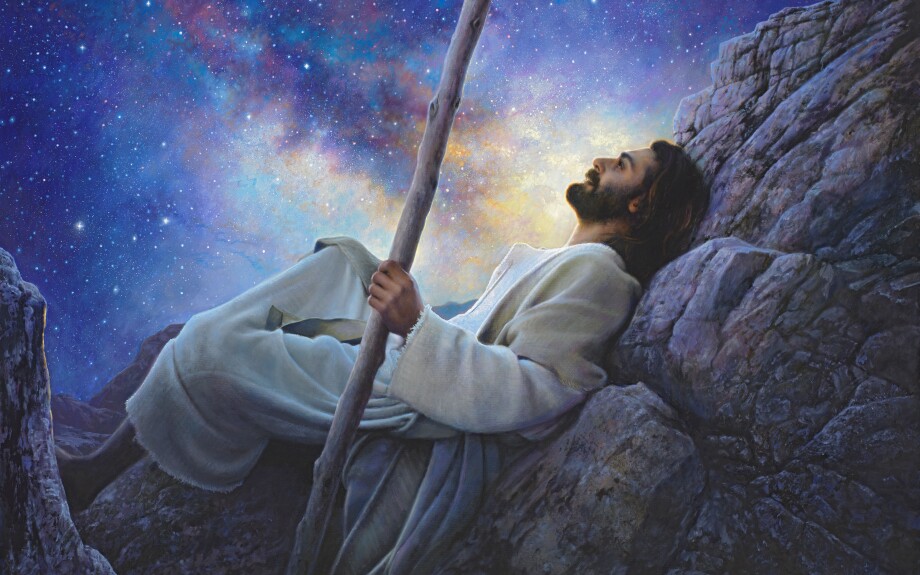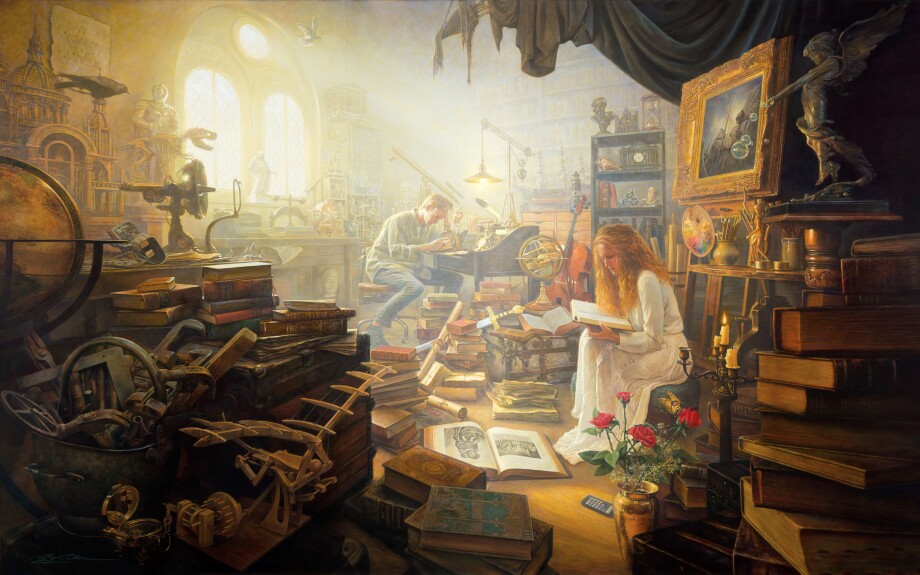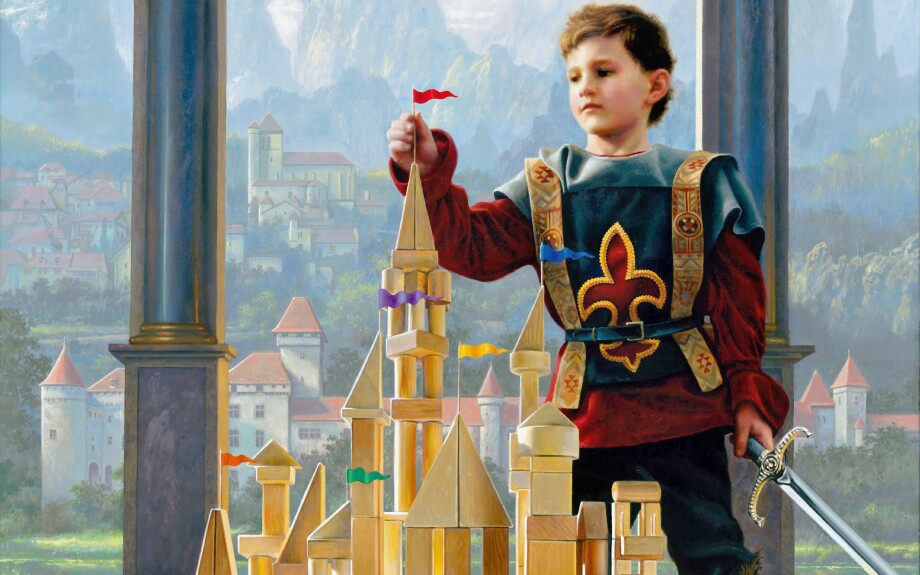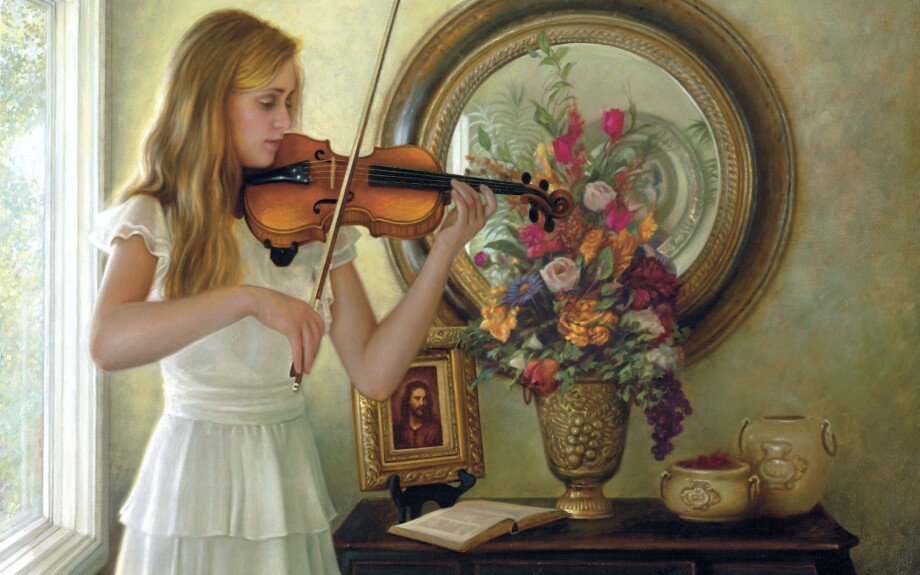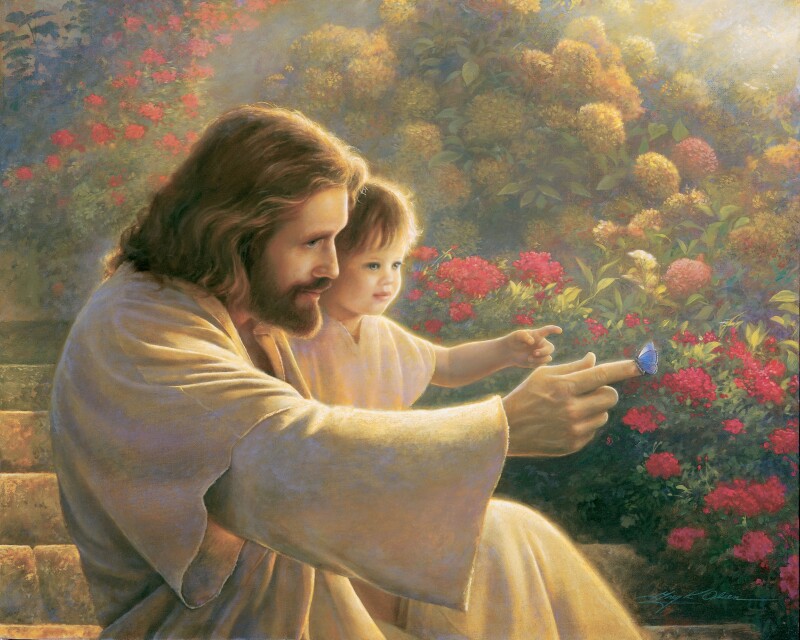Latter-day Saint artist Greg Olsen recently signed a historic deal with Deseret Book. The partnership allows the company to manage the business side of Greg’s complete collection, giving him additional time to focus on a central principle of his life and faith: creativity.
Greg Olsen’s art studio is a treasure trove of stories.
When I visited his space in Heber, Utah, I immediately noticed a wide array of objects—a suit of armor, a collection of Monet books, a typewriter, a golden diving helmet, and a swing.
Greg collected many of these artifacts while creating a commissioned work for Brigham Young University aptly named Treasures of Knowledge.
This painting shows a young woman and a young man studying together in a room much like Greg’s studio, intentionally filled with objects representing the pursuit of learning—such as books, scientific instruments, a globe, and a cello. If you look closely, you might even notice a painting within the painting: one of Greg’s most recognized works entitled Worlds Without End.
The studio is more than a collection of canvases and things: it’s a testament to Greg’s unique experiences, travels, and learnings. For example, what looks like a simple castle tower of blocks symbolizes a child’s divine identity, and a painting of a violinist is a tribute to the daughter of Greg’s friend.
The creative energy and ideas practically burst from the room, which is even more impressive given how much Greg has already created. His website catalog includes over 215 prints, and you can find his religious paintings in temples across over 20 countries. His work is also featured in many corporate collections, including Mobil Corporation, the American Cancer Society, the US Forest Service, and the Pentagon.
But success didn’t come automatically. Throughout his life, Greg has needed to continually nurture his creativity to keep his career afloat. And though he’s now of retiring age, Greg’s enthusiasm for art hasn’t slowed down in the slightest. In fact, it seems to be picking up speed.
The Starving Artist
Greg credits his passion for art to his childhood in Iona, Idaho. He grew up near his grandparents’ farm and found inspiration in the rural scenes surrounding him, drawing his grandfather working in the fields and sketching landscapes of tractors, cattle, and haystacks.
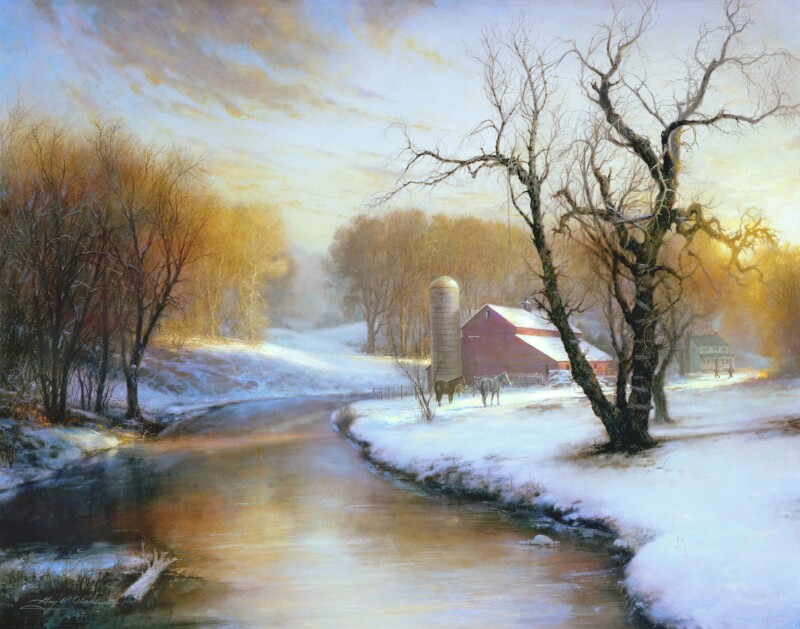
He feels his artistic calling was almost genetic, describing his mother as a “weekend painter” and his father as a “graphics guy.”
“Maybe it was just in my system,” Greg says. “I always had sketchbooks and filled them up, and it’s something that I naturally gravitated to.”
He studied illustration at Utah State University, where he also met his wife, Sydnie Cazier. They now have six children and 18 grandchildren (with another on the way).
Starting and raising a family was not always easy, especially toward the beginning of Greg’s journey. “There was a time early on in my career where it was really tough,” Greg says. “The stereotype of the poor, starving artist? That was me.”
Greg credits his ability to stay committed to his craft and provide for his family to heaven’s assistance and Sydnie’s ever-present encouragement and support. “She’s always had a simple faith, and she’s always, always been positive.”
Greg’s son, Nate, is also quick to acknowledge his mother’s impact. “My mom has a very artistic eye that’s been helpful,” Nate says. “She was influential in my dad getting signed by the first publisher; she went to New York with a friend and set up a booth. My mom’s like the life of the party, so I’m not surprised that she was the right person to send to that kind of event.”
Nate says that his parents’ knack for fun, resourcefulness, and creativity led to a strong family bond. One day, after coming home from school, he found the kitchen table transformed with a bedsheet, brooms, and helmets. Greg invited Nate and Nate’s younger sister Heather to play “imagination,” and the experience inspired a whimsical painting called Airship Adventures.
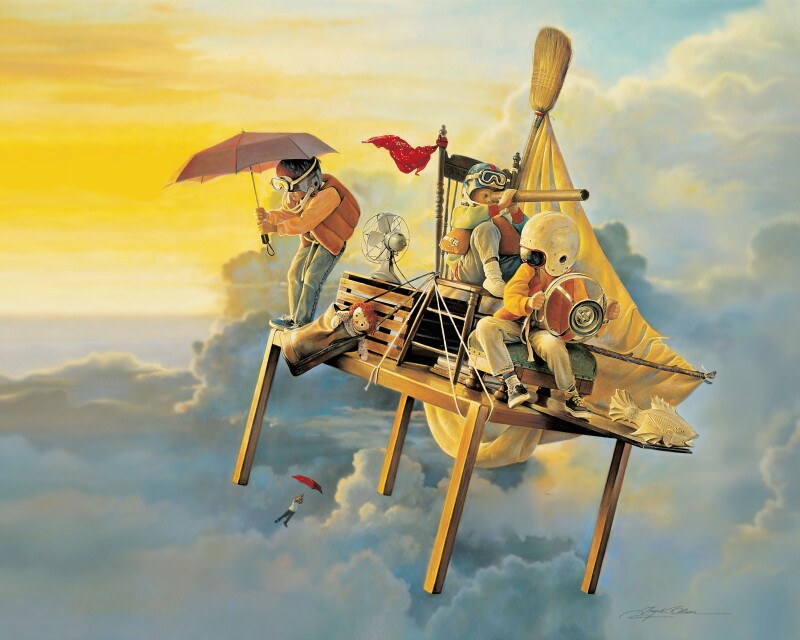
“I feel like my dad is like Walt Disney or something when he creates these magical experiences,” Nate says. “For Dad, painting was sort of a secondary spinoff of just playing with us. … I always tell people he’s a pretty good artist, but he’s a better dad. He’s my best friend and a great example to me. He’s probably 10 times the dad and guy than he is the artist.”
Images of Christ’s Character
Even before it was commercially viable, Greg knew he needed to paint Christ to fulfill his own creative vision.
As a missionary in Toronto, Canada, Greg had the opportunity to create a painting inspired by missionary work. His mission president encouraged him to give the picture to President Spencer W. Kimball, who was visiting for an area conference at the time.
President Kimball praised Greg’s talents and encouraged him to keep creating religious artwork. “Perhaps we can use it in the Church,” Greg remembers him saying.
While Greg took this suggestion to heart, many galleries and publishers weren’t interested in religious scenes at the time, so he mainly worked on commissions, portraits, and Western art.
After college, Greg worked as an in-house illustrator in Salt Lake City for two years before completely turning his focus to painting.
Then, an invitation in 1988 changed everything. A generous art collector encouraged him and his wife to travel with them to Jerusalem, and the trip set in motion several paintings and opportunities that helped Greg’s religious artwork become more marketable.
Today, Greg has created over 70 images of Christ focused on different aspects of His life, character, and divine mission.
“Painting the Savior’s always been something I’ve been challenged by doing,” Greg says. “It’s a very intimidating subject to attempt because I don’t know how you do it justice.”
Greg recognizes that while there’s a stereotypical image that people often associate with Christ based on European paintings, these depictions don’t resonate with everyone and aren’t always historically accurate. So he aims to create a variety of likenesses by focusing on different elements of Christ’s character.
“The way that I try to depict the Savior … has more to do with my feelings about Him necessarily than His actual physical look,” Greg says. “I’m very conscious of trying to capture a representation of someone who I feel is loving, who’s kind, who’s understanding, who’s accepting.”
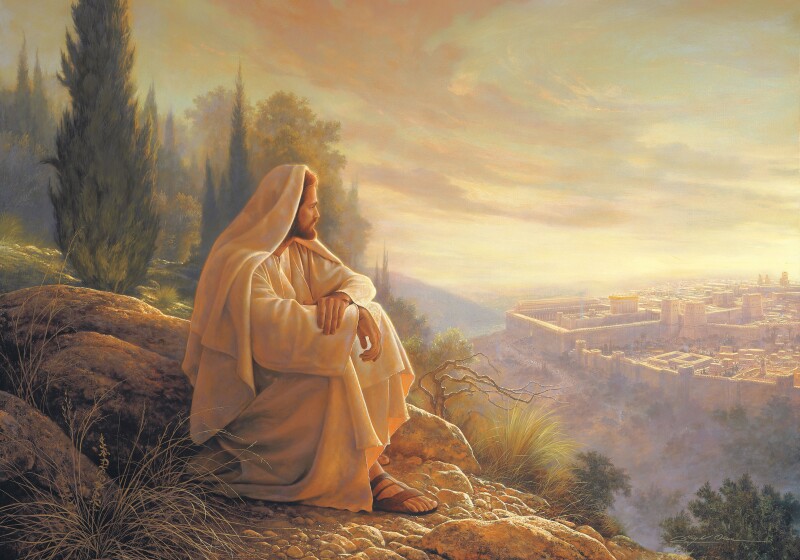
Nate has noticed a broad audience appreciates the messages of his dad’s paintings. This group even includes many who don’t consider themselves to be religious or Christian.
“These images representing Jesus also can represent certain qualities that we try to emulate as humans, like love and compassion and forgiveness,” Nate says. “And that’s something that feels universal … good things that anybody can embrace.”
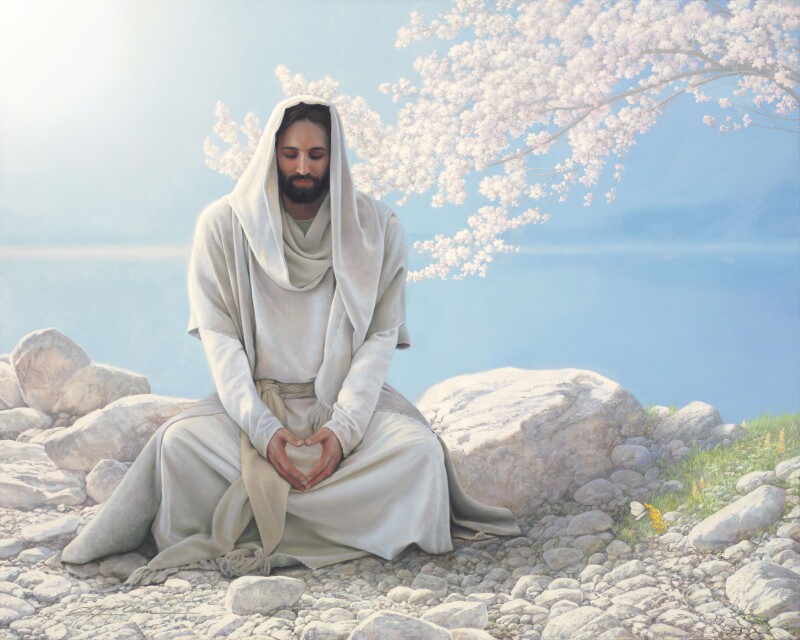
To capture these messages and feelings, Greg spends intentional time reflecting on Christ. A painting might take anywhere from weeks to months, and he says this process requires purposefully slowing down and contemplating.
Reflecting on the Savior’s role as a creator is particularly intriguing to Greg, especially as it relates to our individual journeys to become like Him. Just as he feels genetics played a role in his personal creativity, Greg believes we each have “divine genetics” from our Father in Heaven and Savior that influence our creative potential:
“We’re created in Their likeness, and that means that there’s some part of us that has access to that same thing. We really can be like Them. … Nobody’s exempt from that.”
This inherent shared capacity doesn’t mean that we all need to become artists, either. As Greg says, “It’s so much bigger than that.”
He believes there are infinite ways to express our creativity as forces for good—as a spouse, a friend, a parent, and ultimately, a disciple of Christ. “It doesn’t have to be something that you perform on a stage or that you hang on a gallery wall. It can just be an interaction with a friend at dinner or taking some time with your kids at home to do something that’s fun and helpful for them.”
Motion and Meditation
Greg has trained himself to look for sources that might spark creativity—whether it’s noticing a passing thought, playing with his grandchildren, or appreciating the work of other artists, writers, and musicians.
“Those ideas can come from all different kinds of places, something I read, something I dream about, something I see in my travels,” he says.
The key to recognizing and acting on inspiration, he has learned, is recording ideas. Greg knows from experience that even great ideas can be forgotten, and he makes sure to bring a small notebook with him to jot down ideas and thumbnail sketches.
Similar to faith, creativity often involves struggle. As we grow and develop our divine gifts, we may need to wrestle with the unknown and move forward until the full picture or colors become clear.
“In gospel things, sometimes you just have to, like they say, take one step outside of the light into the darkness, and then it gets revealed a little bit at a time,” Greg says.

He acknowledges that feelings of artistic inspiration can come and go. There are times when he has felt guided to create certain paintings and other times when he’s needed to work through a sense of being left to himself to figure out the next right step.
Even on less creative or inspired days, Greg has a testimony that we can each receive divine guidance—even when we might not recognize it. To stay receptive to the Spirit, Greg prioritizes meditation:
“I spend a few minutes [each day] trying to put the physical world aside. The scriptures talk about ‘heaven is within us.’ And it’s almost like that’s a real place. You can go there for a respite, a place to connect to receive ideas and inspiration and revelation. And the real trick, for me, is trying to tune in to that place—moment by moment—throughout the rest of the day.”
In addition to meditating, Greg feels getting into nature is crucial to moving through spiritual or artistic blocks. “Seeing new scenery, even if it’s just a block away, [taking] a different route home … do something to shake up the status quo of what you’re habitually always doing,” he recommends.
Much like prayer, the creative process requires both putting in effort and surrendering—partnering with God and releasing control of the final result.
“The best things that have happened to me, I haven’t been able to foresee or plan for,” Greg says. “I’ve just always tried to stay in motion. And then doors get opened along the way, and it’s kind of miraculous when that happens.”
Creativity in Every Stage
As the swing in his studio illustrates, Greg likes to stay in motion—and he plans to keep creating art for as long as he can.
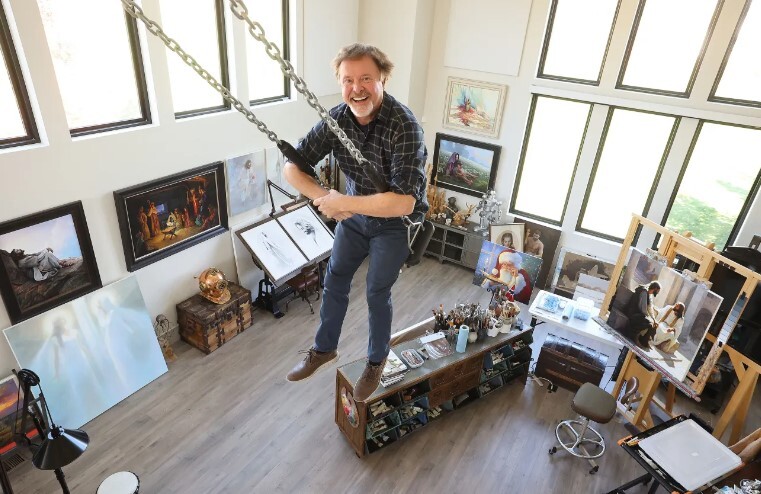
Although he recently turned 65, an age when many people retire, he’s more excited than ever to focus on painting during this next chapter of his career.
His partnership with Deseret Book allows him to put aside what he feels are some of the more mundane, practical mechanics of being an artist and devote his energy to generating art and ideas. “It’s kind of like being a kid again,” he says. “You just do stuff because you want to do it.”
Greg admits that his wrist and eyesight aren’t what they used to be, but he believes that his current life stage leads to more creative potential in the long run. On growing older, Greg says, “Honestly, I am really looking forward to enjoying these whatever remaining years I have, and … I have a sneaky suspicion [that enjoyment] comes out in your creativity.”
Greg is exploring fresh themes and media in this next phase of work, and he’s excited to hone his skills in sculpture, a form he hasn’t used for years.
New beginnings are an important theme in Greg’s art, and he often includes butterflies as a symbol of our divine potential:
“I’ve always thought, I wonder if a caterpillar knows what it’s going to turn into someday, kind of like us. Do we have any idea what our divine genetics have in store for us?”
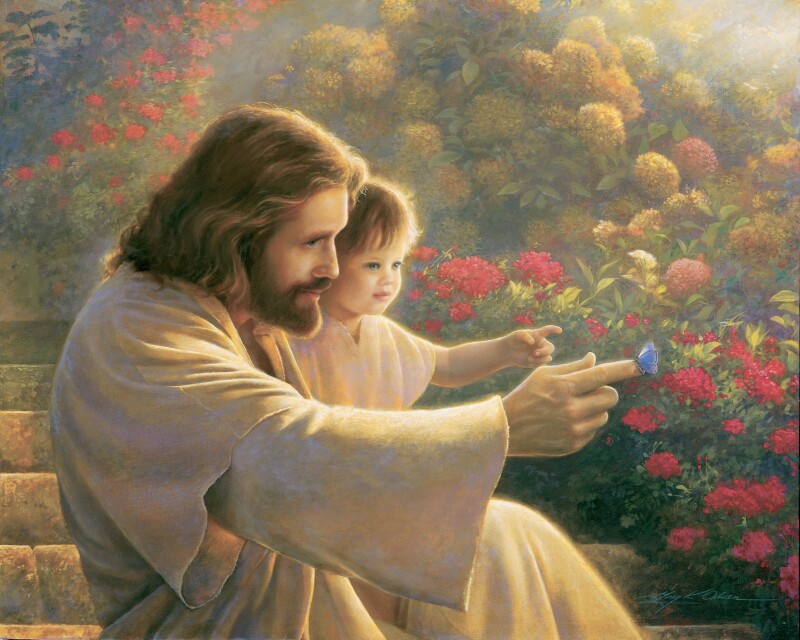
Whether we feel like hungry caterpillars at the beginning of our journeys or monarch butterflies flourishing within our creative pursuits, we each have built-in potential as children of heavenly parents. As we turn to God, He will help us grow into our divine roles as creators—in all aspects of our lives.
And that journey of becoming never ends.
Visiting Greg’s studio and learning about his incredible range of artwork reminded me that creativity is eternal. I don’t have to feel discouraged when I experience writer’s block or worry that I’ll fill some quota on receiving inspiration from the Spirit. I believe that as we stay in motion and commend the outcomes to God, He will make more of our efforts than we could ever imagine.
Greg may already be an influential artist on his creative journey, but he’s just getting started. And I can’t wait to see what’s in store.
Butterflies also contain personal significance for Greg’s family. Watch this video to hear in his own words why butterflies can remind us of angels loving and supporting us from the other side:

